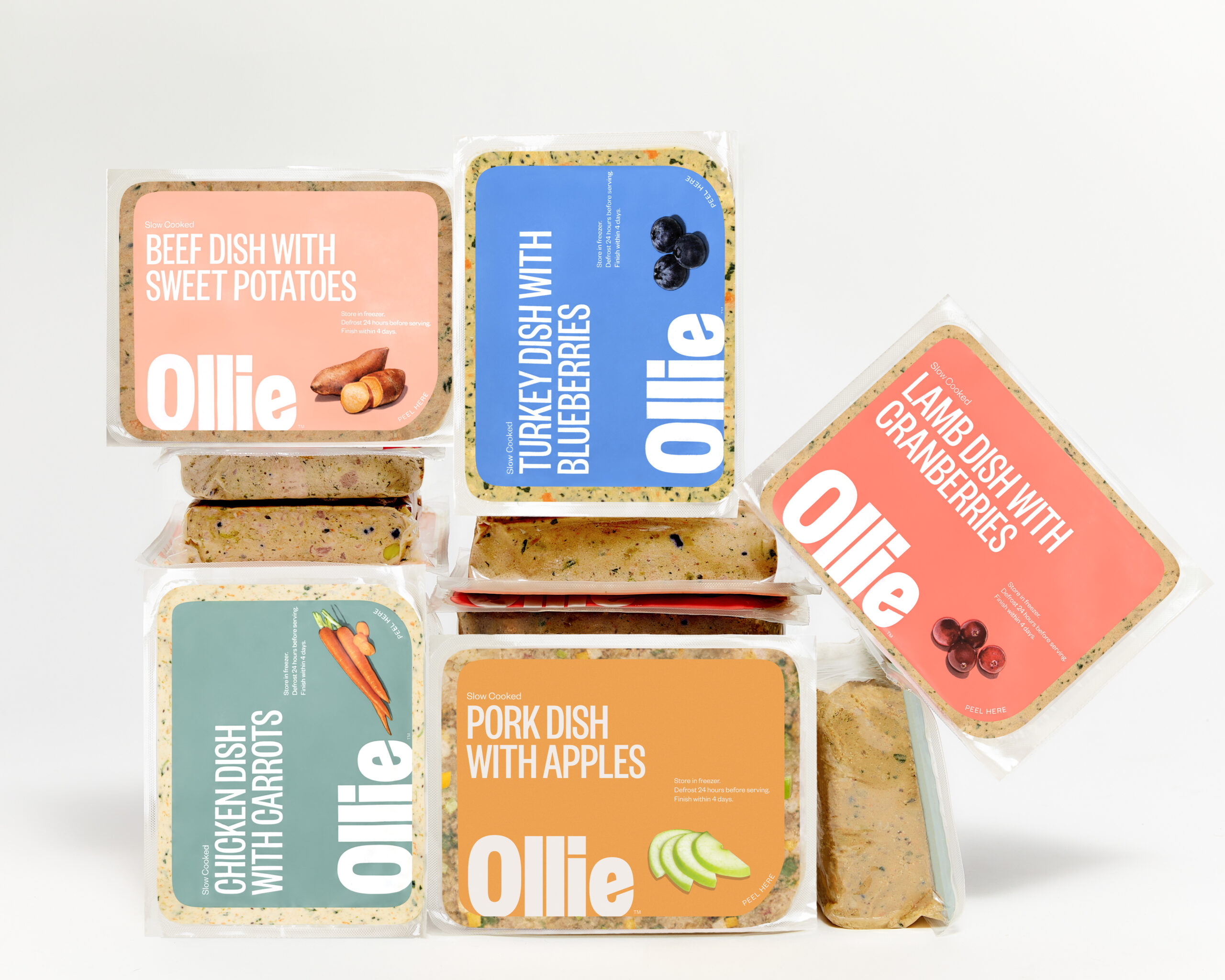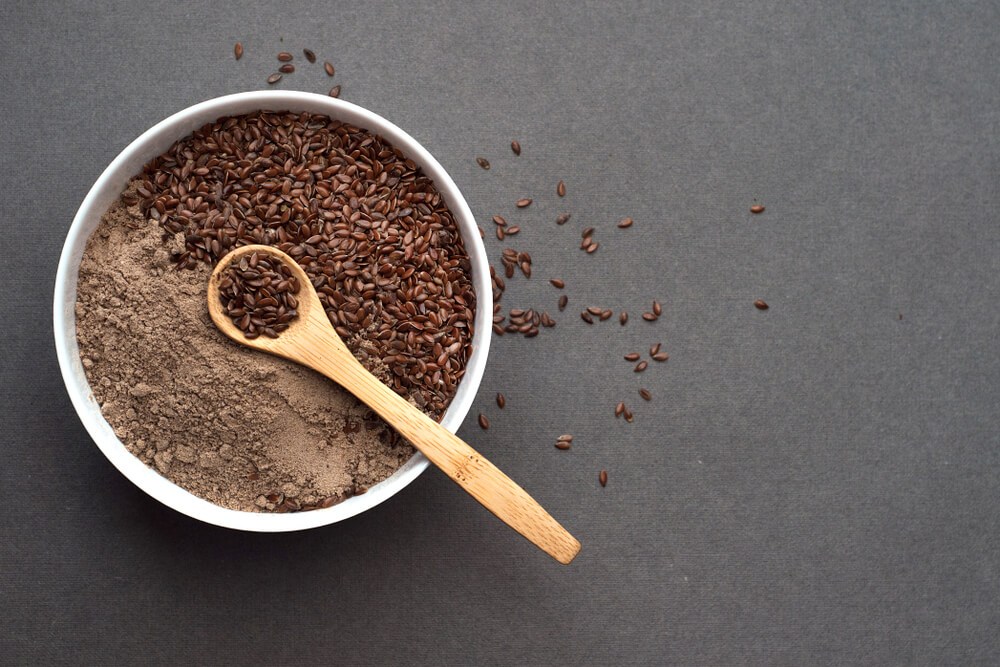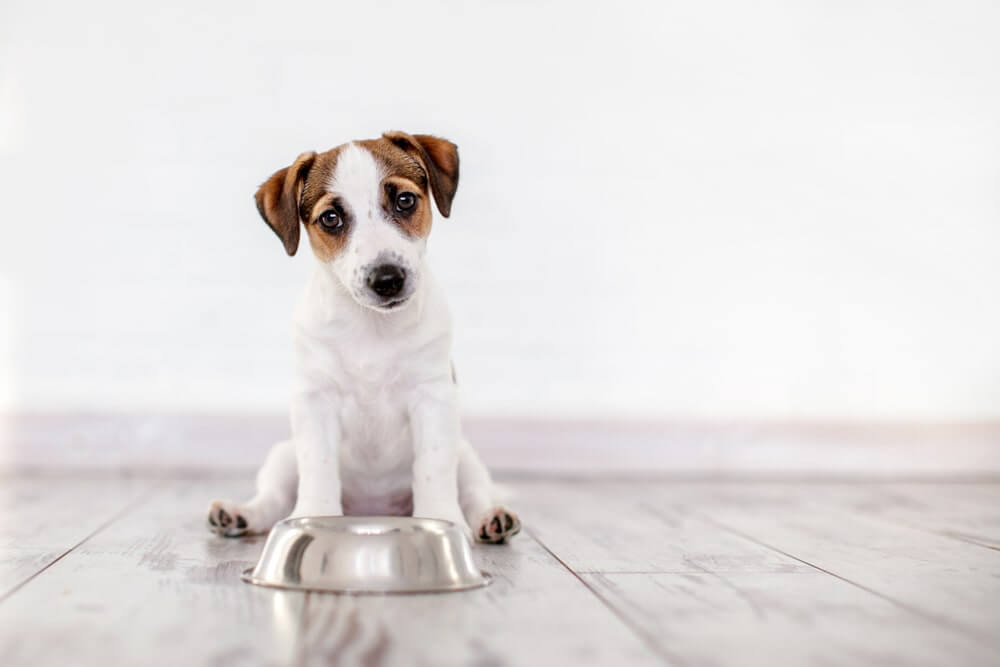Hey Ollie blog readers! We’re offering you an exclusive 60% OFF your starter box! Try now!
Feeding your dog is more than filling their bowl to the brim. To ensure your pup’s maximum health and tail-wagging vitality, you should tailor their appropriate food portion to suit their breed, life stage, weight, health, and activity level, and their food’s quality.
Does dog size matter when planning how much food to feed them?
While assuming that a big dog needs big food portions is natural, this philosophy is not always correct. In fact, the amount you feed your dog will vary throughout their life. For example, an energetic and growing puppy will have vastly different nutritional needs than a senior citizen living the life of leisure. However, according to Prudent Pet, a common practice is to feed a dog based on their weight class, which can be categorized as follows:
- Toy breed (less than 10 pounds)
- Small breed (10 to 20 pounds)
- Medium breed (30 to 50 pounds)
- Large breed (60 to 100+ pounds)
Note that these categories are loose guidelines, not hard-and-fast rules, and some wiggle room exists. If your dog is within one or two pounds of their recommended breed weight, to determine their appropriate food portion size, consider additional factors, including their age, activity level, and their current body condition (e.g., thin, healthy, or overweight), and the food’s caloric density.
Dog food portioning based on dog size
The American Kennel Club currently recognizes more than 200 dog breeds that vary greatly in size, shape, and energy level. No two dogs, including those in the same height or weight range, are exactly alike. Therefore you must also take other factors into consideration for each size group and approximate meal portion range:
- Toy breeds — Toy dogs, such as Pomeranians and Chihuahuas, require petite portions to suit their equally small stomachs, but these high-energy pups often possess a fast metabolism and may require multiple small meals throughout the day, especially during development and early adulthood. Approximate portion sizes may vary between 1/3 cup and 1/2 cup per day.
- Small breeds — Small dogs, such as beagles and shih tzus, may spend their days patrolling the yard or guarding the couch, which will affect their daily calorie needs. High-quality food ensures their smaller portions deliver concentrated nutrition without uncomfortable bloating. Approximate portions may vary between 3/4 cup and 1 ⅔ cups per day.
- Medium breeds — Medium-sized dogs can vary in shape from the athletic boxer to the long and low basset hound. Active breeds will require increased calories during development or peak exercise seasons, while sedentary adults and seniors need less to avoid harmful weight gain. Average portions will vary between 2 and 2 ⅔ cups per day.
- Large breeds — Big dogs have big appetites, but they shouldn’t have big bellies! Large and giant breeds need carefully balanced and portioned nutrition during their early years to ensure healthy growth and development. Consult your veterinarian to prevent under- or over-nourishing your pup. Adult and senior large breeds should be kept lean to avoid orthopedic problems. Approximate portions will vary between 3 ½ and 5 cups per day.
If you have a puppy or you’re considering adopting a dog, consult the American Kennel Club breed size chart. This is a great starting point for determining your pup’s adult size and estimating the amount of food they need each day.
If you’ve taken our Pup Quiz, you know that in addition to breed and age, we ask if your pup has been neutered or spayed. The presence or absence of reproductive hormones greatly impacts your dog’s metabolism and dietary needs. So, while the guidelines we discussed earlier provide a good starting point, you must consider a few additional factors when determining an appropriate amount to feed your pup.
Learn More: How to Tell If Your Dog is Overweight?
Does my dog’s age affect the amount I should feed them?
A dog’s metabolism slows as they age, which can lead to undesirable weight gain and canine obesity. While your young, high-energy boxer could probably snack morning, noon, and night without gaining an ounce, progressive weight gain often coincides with age.
At the other end of the spectrum are puppies, who need to grow physically and developmentally. All that learning and exploring take appropriate quantities of high-quality fuel, balanced with adequate rest. The food puppies eat during this time is critical for proper physical and mental development, as is a consistent meal routine. A puppy has a small stomach and a fast metabolism that requires several small meals per day. Maintain a reliable feeding schedule during your pup’s first few months and try not to vary meal time by more than half an hour. If you need extra incentive, know that a consistent feeding routine accelerates potty training!
Your puppy’s meal portion needs will change during their developmental years. Monitor your dog’s body weight regularly, and add a bit more food every time they gain five or so pounds. If your puppy seems extra hungry during a growth spurt, they may need more food! Because excess nutrition can be detrimental, always consult your veterinarian before changing your pup’s meal portions.
Does exercise affect how much I should feed my dog?
The common weight anecdote for people is calories in, calories out, and the same applies to your four-legged friend. Physical activity or inactivity can directly affect your dog’s nutritional needs.
A high-energy and active dog burns more calories and requires more protein, fat, and carbohydrates to replenish their energy, repair their muscles, support their metabolism, and power physiologic processes throughout their body. A low-energy, senior, or activity-restricted dog recovering from an injury or surgery is not burning energy at a high rate, and therefore requires fewer calories and less dietary fat than their active counterparts. Excess nutrition for these dogs can quickly result in weight gain and associated health problems.
How Dog Activity Level Affects Feeding Levels
How can I tell if I’m feeding my dog enough food?
Although dog nutrition discussions tend to focus on overfeeding risks, underfeeding your dog can be equally detrimental to their health. Routinely assess your pup’s body condition score to determine if they are too thin or too heavy. An underfed dog may display behavior changes, such as food stealing, begging, and consuming nonfood items. In addition, their body will exhibit physical changes.
Because a serious health condition can cause weight loss, always consult your veterinarian if your puppy or dog appears underweight or has a ravenous appetite. Only increase their food intake after they’ve received a clean bill of health. Otherwise, you may be literally feeding the problem.
Show your pet love with food, but moderate treats
Treats are an excellent way to communicate with your dog and reinforce desirable behavior during everyday life and formal training. High-value food rewards (e.g., bite-sized meat or cheese pieces) can accelerate your puppy’s learning, including life skills, such as potty training and socialization, improve their focus, and increase their attention span.
Ideally, treats should be no more than 10% of your dog’s daily calorie intake. If you use high-fat, high-calorie, or protein training treats, adjust your pup’s meal portions to prevent undesirable weight gain. As your dog’s training progresses, you’ll be able to reward them with praise rather than with food, resulting in a more consistent diet.
Unfortunately, many well-intentioned dog owners express love and affection by spoiling their pups with treats and table scraps. As a result, more than half of U.S. dogs are overweight and at an increased risk for developing life-altering health issues such as orthopedic problems, diabetes, cancer, and heart disease. Some dog breeds are more likely to gain weight than others, so ensure you monitor your dog’s body condition if their breed is predisposed to obesity.
3 Healthy Treats To Make For Your Dog
Food quantity matters, but quality is important too
Junk food and sugary beverages supply humans with empty calories. These temptations may taste delicious and trigger feel-good chemicals, such as dopamine, to rush to your brain, but the aftereffects are far from pleasant.
The same thing is true for your dog. Many commercially available dog food brands are packed with cheap fillers and empty calories. These foods frequently include artificial flavors, preservatives, vegetable oils, and binding agents that give the illusion of nutrition and flavor while delivering minimal health benefits.
Many commercial dog foods are the canine equivalent of chips or cheap snack mix, which are easy and accessible, but devoid of any real health benefits.
At Ollie, we take your pup’s health seriously and work with a veterinary nutritionist to develop recipes that are full of delicious flavor and high-quality nutrition. Pups love our gently cooked meals delivered straight to your door. Ollie meals fit your dog’s unique nutrition needs, and every serving is portioned perfectly for your pup’s needs. You will feel great being able to offer your dog a meal with carefully sourced human-grade ingredients and no guesswork regarding their meal portion size.
Most dogs will eat almost anything you put in front of them. However, as an owner, you are responsible for making informed decisions about your dog’s food and providing them with the highest quality nutrition available.


Discover Which Recipe Plan is Right for Your Dog’s Needs
Get 60% of your first box of Ollie’s fresh
delivered meals today!
The Ollie blog is devoted to helping pet parents lead healthier lives with their pups. To learn more about our fresh, human-grade food, check out MyOllie.com.
Tagged As:

The nutrition your dog needs,
the food they want.

Enjoying our articles? Subscribe our Newsletters and get new articles directly to your inbox
You might also like
18 September 2025
6 MINS READ
Can Dogs Eat Flaxseed? Is Flaxseed Safe For Dogs?
Wondering if flaxseed is safe for your dog? This guide breaks down the benefits, risks, and best ways to add flaxseed, or flaxseed oil, to your pup’s diet.
18 September 2025
6 MINS READ
Why is My Dog Not Eating But Acting Normal? Causes & What To Do
Worried your dog isn’t eating but still acting normal? Here’s what could be going on and what to do to help your pup get their appetite back.
18 September 2025
5 MINS READ
Can Dogs Eat Crab? Is Crab Meat Safe For Dogs?
Thinking about giving your dog crab meat? Find out if it’s safe, what risks to watch for, and when crab might do more harm than good.







